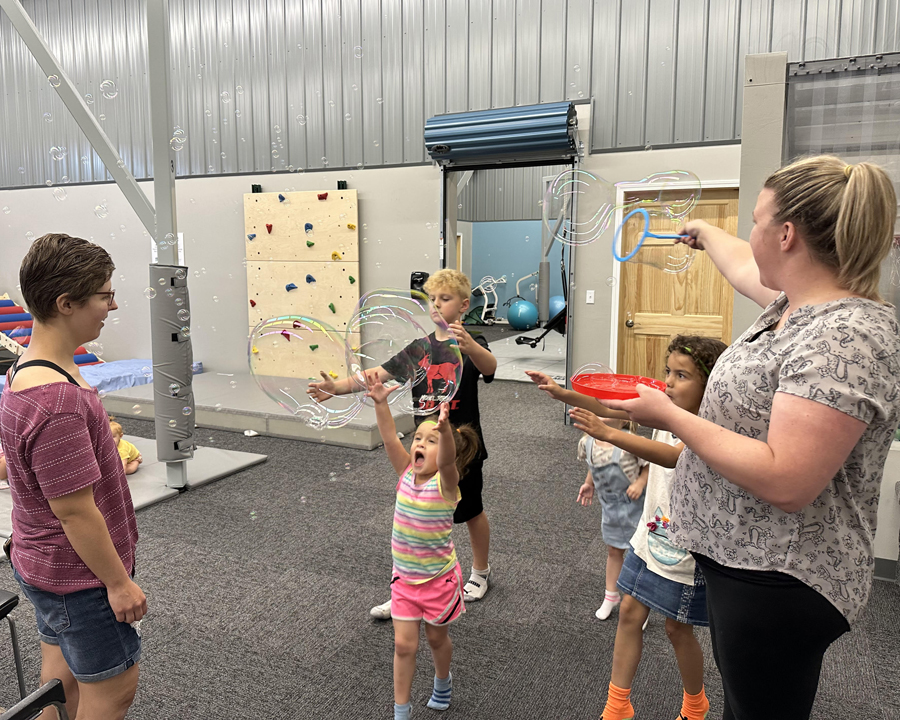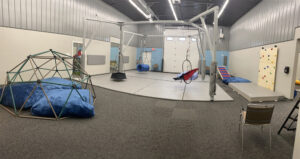
By Annika Morschauser
Contributing Writer
GREEN BAY – Integrated Sensory helps those with sensory needs, including individuals with ADHD, anxiety, PTSD and autism.
The CEO/Founder Faith Ainsworth along with her husband, Ian Ainsworth, recognized the need for a place where people with sensory needs can lessen their struggles with sensory information.
“We knew that the area needed a resource and that there really was nowhere to go and take your kids to have their sensory needs met, so we just wanted to do something different and be able to actually be with our own kids alone and be able to serve the community in this way,” Ainsworth said.
Ainsworth introduced Integrated Sensory to the greater Green Bay community in November 2022.
A sensory need is when stimuli can be hard for someone with sensory difficulties to process and react to.
When someone hears the word sensory, one might think of the five senses; however, there are three additional sensory systems — proprioception, vestibular and interoceptive — that Integrated Sensory covers.
They most commonly see proprioception and vestibular issues, which deal with body spatial awareness and balance.
Their facility is prepped for handling these by providing a number of structures to play on and interact with.
They have swings, jungle gyms, crash pads, trampolines, ball pit, climbing wall and more.
Integrated Sensory does not provide care services as parents or other caregivers are required to be with the individual who has the sensory need.

A scheduled tour of the facility during the first visit is required for those interested, followed by an Introductory to play coaching which goes into detail of how often the individual should be visiting, past history, etc.
“A lot of individuals are recommended to have a sensory diet where they’re supposed to be having sensory needs met on a regular basis and it’s just not possible…” Ainsworth said.
That’s why Integrated Sensory has play coaches for individuals who don’t have the space or resources at home to complete their sensory diet.
They assist in guiding the individual in fulfilling their sensory needs.
Similar to a typical gym, Integrated Sensory has memberships that allow individuals full access to the gym with their additional therapy equipment along with any events and other resources.
For example, their partnership with a Trust-Based Relational Intervention (TBRI®) practitioner in the area allows for them to come in monthly to explain and educate the members and their families about what TBRI® means, as the sensory gym follows that practice.
Members also have the opportunity to bring their family into the facility as well.
“We really like to see families come together and connect,” Ainsworth said.
Currently, Integrated Sensory has an estimated 156 members that use their facility and services and are always looking to gain more members.
With a strong membership base so far, Ainsworth said that they are looking into expanding to more locations but are ensuring the stability and growth of their original facility to continue to provide the best and most efficient services possible.
All ages are welcome as they have a toddler area and their sensory gym is also beneficial for older clients with Alzheimer’s or dementia.
Their services have been beneficial to their members as Ainsworth explained how changes can be seen on a daily basis whether that’s through an individual being able to sit through a doctor’s appointment or being able to stay in the classroom at school instead of being sent home for example.
Seeing results is reliant on continuous use of the facility and the practices that are taught.
“It depends on the individuals but for most individuals it’s a lifelong need. The intensity might not be as much as when somebody is younger, but it’s still something that needs to be met,” Ainsworth said.
For more information, visit https://integrated-sensory.com.
